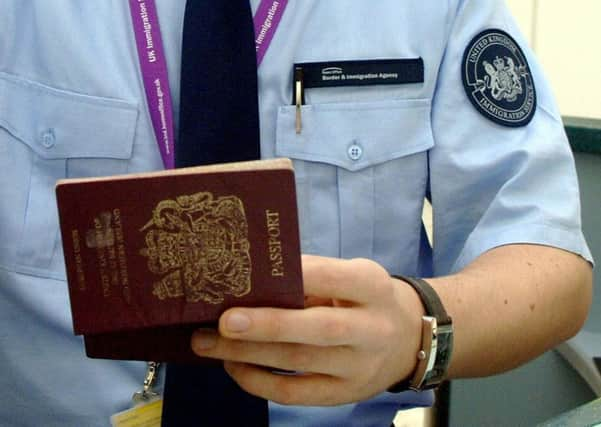Report fails to take into account immigration initiatives from last five years, authors admit


David Goodhart, the head of Policy Exchange - the think tank which published the research - said they had not been to the areas, or spoken to community groups and councils in putting together their research.
It means the report ignores factors from the last five years such as the 2012/13 protests in Boston, Spalding and Wisbech, one of which sparked a report into the social impact of population change in Boston.
Advertisement
Hide AdAdvertisement
Hide AdBoston, which has seen an influx of mostly Eastern European workers over recent years, was deemed the least integrated in today’s (Thursday’s) report, based on figures including whether individuals held a UK passport, how many households were ethnically mixed and employment statuses.
It was closely followed by neighbouring Spalding (fourth) and Wisbech (second).
The think-tank which published the research said that local councils should be given a statutory responsibility to improve community integration.
Mr Goodhart told this newspaper: “We are looking at relatively abstract data and we doing this because the debate is abstract.”
Advertisement
Hide AdAdvertisement
Hide AdHe said the organisation, which is submitting its findings to the Government’s new Demography, Immigration and Integration Unit, wanted to ‘make the debate more concrete’ and was looking at ‘objective factors’.
“We can count things like the number of people in the area who identifiy with the country because it’s in the census,” he said as an example.
“You might argue that doing it that way is slightly unfair,” he said, “But the conclusion we came to broadly confirmed what we knew about the country.”
He acknowledged that the census data might be more unfair on Eastern England because of the ‘nature of immigration’ here - saying the Eastern European migrants were often ‘very mobile’ - coming to work, then going home every two or three years.
He said the data also showed ‘segregated workforces’.
Advertisement
Hide AdAdvertisement
Hide AdMr Goodhart, who has previously written about subjects such as post-war immigration, said he had not been to Boston in the last few years
“I’ve not been to Boston in the last two or three years - it might be that Boston may be different but I kind of doubt it,” he said.
However he said he did not want to ‘poo poo’ initiatives which had taken place.
“We are not taking into account these sorts of factors, we’re taking into account objective data,” he said:
Advertisement
Hide AdAdvertisement
Hide Ad“We’re not going and talking to people, if I went to any of these places and spoke to council leaders and local politicians, they would say ‘we know there’s a problem and we have been working on it the last five years’.”
He said the report was not aiming to ‘denigrate’ any of the work done, and repeated the message that getting councils and local leaders to publish their data could push people to do more about integration.
He said the data would show ‘where we needed to focus our attention on national resources’.
He admitted that the Government could not force a ‘liberal society’ to promote integration - with everyone having free choice of which school to send their children to for instance - and acknowledged the Government was ‘working against some powerful forces’.
Advertisement
Hide AdAdvertisement
Hide AdHowever, he said it was hoped things like the ‘power of good example’ such as a failing school being improved by immigration and integration might help promote the aims of the Government.
Policy Exchange said forcing councils to publish regular audits would focus minds on actions to ensure a better ethnic mix, for example of pupils in particular schools or staff in public services.
The Government should compile a comprehensive national analysis of the picture every three to five years, it said as it launched a new Demography, Immigration and Integration Unit.
Analysis using data from the 2011 consensus - related to 160 places with a population over 20,000 of whom at least 15 per cent were from an ethnic minority - showed there were significant variations in the extent of inclusion.
Advertisement
Hide AdAdvertisement
Hide AdThe 10 least-integrated places were identified as Boston, Wisbech, Oldham, Spalding, Bradford, Batley, Halifax, Blackburn, Keighley and Accrington.
The most integrated were mostly prosperous suburbs or small towns around London and Birmingham, with the largest minorities being successful Indians or Europeans.
Top was Amersham, followed by Sutton Coldfield, Loughton, Potters Bar, Letchworth Garden City, Stretford, Bushey, West Bridgford, Rickmansworth and Esher.